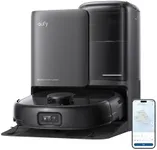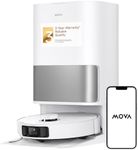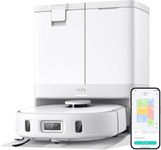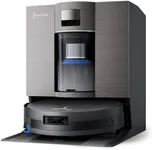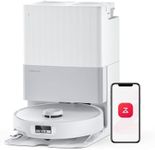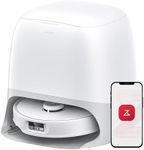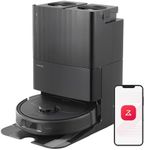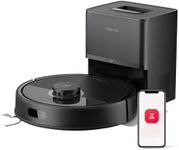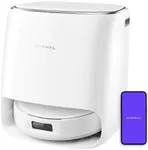Buying Guide for the Best Robot Vacuum And Mop
Choosing a robot vacuum and mop can make cleaning your home much easier and more convenient. The right model for you depends on your living space, the types of floors you have, and your expectations for cleaning performance. It's important to understand the main features and specifications so you can match them to your needs and lifestyle. By focusing on the key specs, you can find a robot that keeps your floors clean with minimal effort from you.Suction PowerSuction power refers to how strongly the robot can pull in dirt and debris from your floors. This is important because higher suction means better cleaning, especially on carpets or with pet hair. Suction power is usually measured in Pascals (Pa). Lower suction (under 1500 Pa) is suitable for hard floors and light cleaning, while medium suction (1500-2500 Pa) works well for mixed surfaces. High suction (over 2500 Pa) is best for thick carpets or homes with pets. If you have mostly hard floors, you don't need the highest suction, but for carpets or lots of pet hair, look for a stronger model.
Mopping FunctionalityThe mopping feature lets the robot wipe your floors with a damp cloth or pad. Some robots only drag a wet pad, while others have electronic water control or vibrating mops for deeper cleaning. Basic mopping is fine for light dust and maintenance, but if you want to tackle dried stains or have a lot of tile or hardwood, look for advanced mopping features. Consider your floor type and how much mopping you need—if you just want to keep dust down, basic is enough, but for sticky messes, go for a more advanced system.
Navigation and MappingNavigation and mapping determine how well the robot moves around your home and avoids obstacles. Basic robots use random patterns and may miss spots, while advanced models use sensors or lasers to map your rooms and clean in straight lines. If you have a simple, open space, basic navigation may be enough. For larger or more complex homes, or if you want the robot to clean specific rooms, look for mapping features. This helps the robot clean more efficiently and avoid getting stuck.
Battery Life and ChargingBattery life tells you how long the robot can clean before needing to recharge. Shorter battery life (under 90 minutes) is fine for small apartments, while longer battery life (over 120 minutes) is better for bigger homes. Some robots can return to their dock, recharge, and resume cleaning automatically. Think about the size of your home—if it's large, longer battery life or auto-resume is important so the robot can finish the job in one go.
Dustbin and Water Tank CapacityThe dustbin holds the dirt and debris, while the water tank stores the mopping water. Larger capacities mean the robot can clean more area before you need to empty or refill it. Small bins and tanks are fine for light, frequent cleaning or small spaces, but for bigger homes or less frequent maintenance, larger capacities are more convenient. Consider how often you want to interact with the robot—if you prefer less frequent emptying and refilling, look for bigger bins and tanks.
App and Smart FeaturesMany robot vacuums and mops can connect to your phone or smart home system. This lets you schedule cleanings, set no-go zones, or control the robot remotely. Some even support voice assistants. If you like using your phone for convenience or want to customize cleaning routines, look for models with strong app support. If you prefer simple, push-button operation, you may not need advanced smart features.
Floor Type CompatibilityNot all robots work equally well on every floor type. Some are better for hard floors, while others handle carpets or rugs more effectively. Check if the robot is designed for your main floor type. If you have a mix of surfaces, look for a model that can automatically adjust its cleaning mode or has strong suction and mopping features for both hard floors and carpets.
